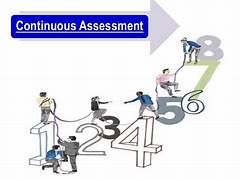Introduction to Project Management
Assignment management is a critical discipline that encompasses planning, executing, and closing
Assignment . It involves coordinating resources, managing teams, and ensuring that project objectives are achieved within defined constraints, including scope, time, and budget. Effective
Assignment management is essential for delivering value, meeting stakeholder expectations, and facilitating organizational success.
What is a Project?
A
Assignment is a temporary endeavor undertaken to create a unique product, service, or result.
Assignment are characterized by specific goals, a defined start and end, and a clear scope. Unlike routine operations, projects are non-repetitive and aim to produce a singular outcome, making
project management essential for ensuring successful execution.
Key Characteristics of Projects

- Temporary Nature: Every project has a specific beginning and end, defining its temporary nature.
- Unique Deliverables: Each project results in unique products or services, which can differ significantly from previous projects.
- Progressive Elaboration: Projects often evolve as they progress, requiring continuous assessment and adjustment.
Examples of Projects
- Software Development: Creating a new application or software solution involves multiple phases, including planning, design, coding, testing, and deployment.
- Construction Projects: Building a new facility or infrastructure project involves extensive planning, resource allocation, and regulatory compliance.
- Event Management: Organizing a corporate event or conference entails detailed logistics, scheduling, and stakeholder coordination.
Importance of Project Management
The importance of project management cannot be overstated, as it directly impacts the success of projects across various industries. Here are key reasons why effective project management is vital:
- Alignment with Organizational Goals: Project management helps ensure that projects align with the strategic objectives of the organization, enhancing overall effectiveness.
- Resource Optimization: By effectively managing resources—such as time, budget, and personnel—project management maximizes value and minimizes waste.
- Risk Mitigation: Identifying potential risks and developing mitigation strategies in advance reduces the likelihood of project failures.
- Stakeholder Engagement: Keeping stakeholders informed and involved throughout the project lifecycle fosters trust and satisfaction.
- Enhanced Communication: Establishing clear communication channels improves collaboration among team members and stakeholders, leading to better outcomes.
Project Management Methodologies
Choosing the right project management methodology is essential for effectively guiding projects to success. Different methodologies offer unique approaches to managing projects, each with specific benefits and drawbacks. Here are some widely recognized methodologies:
1. Waterfall Methodology
The Waterfall methodology is a linear and sequential approach where each project phase must be completed before moving on to the next. This methodology is best suited for projects with well-defined requirements and minimal expected changes.
Key Features:
- Phases: Typically includes phases such as requirements, design, implementation, verification, and maintenance.
- Documentation: Extensive documentation is produced at each stage, ensuring clarity and accountability.
- Control: Provides control over the project timeline and resources.
Pros and Cons:
- Pros: Clear structure and predictable outcomes; easy to manage and understand.
- Cons: Inflexible to changes; late detection of issues can lead to costly delays.
2. Agile Methodology
Agile project management is an iterative and incremental approach that emphasizes flexibility and responsiveness to change. Agile is particularly popular in software development but can be applied to various projects.
Key Features:
- Sprints: Projects are divided into short, time-boxed iterations known as sprints.
- Continuous Feedback: Stakeholders provide ongoing feedback, allowing teams to adjust and refine project deliverables.
- Cross-Functional Teams: Encourages collaboration among diverse team members with various skill sets.
Pros and Cons:
- Pros: Highly adaptable to changes; promotes stakeholder engagement and satisfaction.
- Cons: Requires a cultural shift within organizations; can lead to scope creep if not managed properly.
3. Scrum Framework
Scrum is a specific implementation of the Agile methodology that focuses on delivering value through short, iterative cycles called sprints. Scrum defines clear roles and responsibilities within the project team.
Key Features:
- Roles: Includes the Scrum Master (facilitator), Product Owner (stakeholder representative), and Development Team (cross-functional members).
- Ceremonies: Regular meetings such as sprint planning, daily stand-ups, and sprint reviews ensure transparency and accountability.
- Artifacts: Key artifacts include the product backlog (list of work items), sprint backlog (work items selected for the sprint), and the increment (completed work).
Pros and Cons:
- Pros: Promotes teamwork and accountability; enables rapid adaptation to changing requirements.
- Cons: Requires full team commitment; can be chaotic without strong leadership.
4. Lean Project Management
Lean project management focuses on maximizing value while minimizing waste. It emphasizes continuous improvement, efficiency, and customer satisfaction. This methodology is often used in manufacturing and service industries.
Key Features:
- Value Stream Mapping: Analyzing the flow of materials and information to identify waste and inefficiencies.
- Continuous Improvement: Encourages teams to implement small, incremental changes to enhance processes.
- Customer Focus: Prioritizes delivering value to the customer.
Pros and Cons:
- Pros: Increases efficiency; fosters a culture of continuous improvement.
- Cons: Requires a cultural shift; may not suit all project types.
5. PRINCE2 Methodology
PRINCE2 (Projects in Controlled Environments) is a structured project management methodology widely used in the UK and internationally. It focuses on organization, control, and accountability throughout the project lifecycle.
Key Features:
- Processes: Divides projects into manageable processes, including starting up a project, directing a project, and controlling a stage.
- Roles and Responsibilities: Clearly defined roles help clarify accountability and streamline decision-making.
- Tailoring: PRINCE2 can be tailored to fit the specific needs of a project or organization.
Pros and Cons:
- Pros: Highly structured and process-oriented; provides clear guidelines for project management.
- Cons: Can be overly bureaucratic; may require training to implement effectively.
Key Phases of Project Management
Successful project management follows a structured process encompassing several key phases. Each phase contributes to the overall success of the project.
1. Initiation Phase
The initiation phase defines the project at a high level. It involves identifying stakeholders, defining project objectives, and establishing a project charter.
Key Activities:
- Identify Stakeholders: Determine who will be affected by the project and their respective interests.
- Define Project Objectives: Clearly articulate what the project aims to achieve.
- Develop Project Charter: Create a formal document that outlines the project's purpose, objectives, scope, and stakeholders.
2. Planning Phase
The planning phase is critical for laying the groundwork for successful project execution. It involves detailing how the project will be executed, monitored, and controlled.
Key Activities:
- Develop Project Management Plan: Create a comprehensive plan that outlines how the project will be executed, including schedules, budgets, and resource allocation.
- Work Breakdown Structure (WBS): Break the project into smaller, manageable tasks to facilitate planning and execution.
- Resource Planning: Identify the resources needed for the project, including personnel, equipment, and materials.
- Risk Management: Conduct a risk assessment to identify potential risks and develop strategies for mitigation.
3. Execution Phase
The execution phase involves implementing the project plan and delivering the project outputs. This phase requires coordination and collaboration among team members.
Key Activities:
- Task Execution: Carry out the tasks outlined in the project plan, ensuring that team members are clear on their responsibilities.
- Quality Management: Monitor the quality of deliverables to ensure they meet established standards.
- Stakeholder Communication: Maintain regular communication with stakeholders to keep them informed of progress and address any concerns.
4. Monitoring and Controlling Phase
Monitoring and controlling occur concurrently with the execution phase and involve tracking project performance against the project management plan.
Key Activities:
- Performance Measurement: Use key performance indicators (KPIs) to assess project progress and performance.
- Change Control: Implement a change control process to manage any changes to the project scope, schedule, or budget.
- Issue Resolution: Identify and address any issues or challenges that arise during project execution.
5. Closing Phase
The closing phase marks the formal completion of the project. It involves finalizing all activities and ensuring that deliverables are accepted.
Key Activities:
- Obtain Stakeholder Approval: Ensure that all project deliverables meet stakeholder expectations and receive formal approval.
- Conduct Project Review: Analyze project outcomes, successes, and areas for improvement through lessons learned sessions.
- Close Project Documentation: Finalize all project documentation and archive it for future reference.
Project Management Tools
Effective project management relies on various tools that facilitate planning, execution, and monitoring. Here are some popular project management tools that can enhance your project management processes:
https://generateyouraudience.com/13-project-management-tools-seo-professionals/#:~:text=Here%2C%20we%20explore%20the%20top%2013%20project%20management,team%20collaboration%2C%20customisable%20workflows%2C%20and%20even%20SEO-specific%20integrations. 1. Trello
- Overview: A visual project management tool that uses boards and cards to help teams organize tasks and projects.
- Key Features: Customizable boards, task lists, due dates, and integrations with other apps.
- Best For: Teams looking for a simple and intuitive way to manage tasks.
2. Asana
- Overview: A versatile project management tool designed to help teams track work and collaborate effectively.
- Key Features: Task assignments, project timelines, calendars, and reporting capabilities.
- Best For: Teams of all sizes looking for a robust project management solution.
3. Microsoft Project
- Overview: A comprehensive project management software that offers advanced planning and scheduling features.
- Key Features: Gantt charts, resource management, and project tracking tools.
- Best For: Larger organizations that require detailed project planning and tracking.
4. Jira
- Overview: A project management tool primarily used for Agile software development.
- Key Features: Issue tracking, sprint planning, and reporting tools.
- Best For: Development teams following Agile methodologies.
5. Monday.com
- Overview: A flexible project management platform that allows teams to customize workflows and processes.
- Key Features: Visual project tracking, automation, and integrations with various tools.
- Best For: Teams that need a highly customizable project management solution.
Conclusion
Project management is an essential discipline that enables organizations to effectively plan, execute, and close projects. By understanding the key characteristics of projects, the importance of project management, and various methodologies, professionals can enhance their project management skills. Utilizing the right tools and following a structured process ensures that projects are completed successfully, delivering value to stakeholders and contributing to organizational goals. Whether you are a novice or an experienced project manager, mastering the principles of project management is crucial for achieving success in today’s fast-paced business environment.


